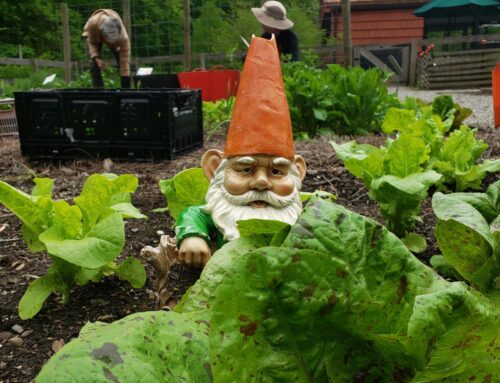Sometimes it’s the most unlikely organisms that can reveal the effects of climate change on our natural environment. Over the summer, Tyler hosted a duo of researchers in our woodland who were looking for just such an organism, in this case, a microscopic one.
Dr. Douda Bensasson, using her husband Casey as an assistant, was looking for a specific strain of wild yeast that grows in our woodlands. Wild yeasts can be found all around us on branches, berries, barks, and cones, and some strains are used in baking, beer-brewing, and winemaking. Dr. Bensasson is an Assistant Professor of Plant Biology at the University of Georgia in the Institute of Bioinformatics. She and her associates are working under a National Science Foundation grant, studying the relatively simple genome of wild yeast to develop methods that can be applied to more complicated organisms. In her work, she uses a combined evolutionary and bioinformatics approach that integrates field and laboratory work with data crunching on a computer. Ultimately this research hopes to demonstrate methods to predict how yeast biodiversity could be affected by climate change, and apply that understanding to the broader range of life.
The fieldwork is happening in multiple locations, so Tyler is just one stop. Much of the fieldwork is done by graduate students, but Dr. Bensasson feels the need to understand each step of the process herself to better help her students.
After carefully recording the temperature and humidity at the sample site, she takes bark scrapings from the north side of multiple trees. The samples are then stored in marked vials for laboratory analysis of natural adaptations in the DNA.
Interestingly, Tyler was chosen as a sample site based on previous research by local University of Pennsylvania biologist, Dr. Paul Sniegowski. Dr. Sniegowski’s seminal work on wild yeasts rekindled interest in wild yeast research, and his fieldwork was done right here at Tyler Arboretum in 1999. Dr. Besasson is building on an aspect of his research by comparing her newer yeast samples to his earlier samples and looking at genetic changes that have evolved in the yeast population over time. We may not see results from this fascinating study until 2023, but we are excited to learn what yeast can tell us about Climate Change that may change our environment in visible, and invisible, ways.








